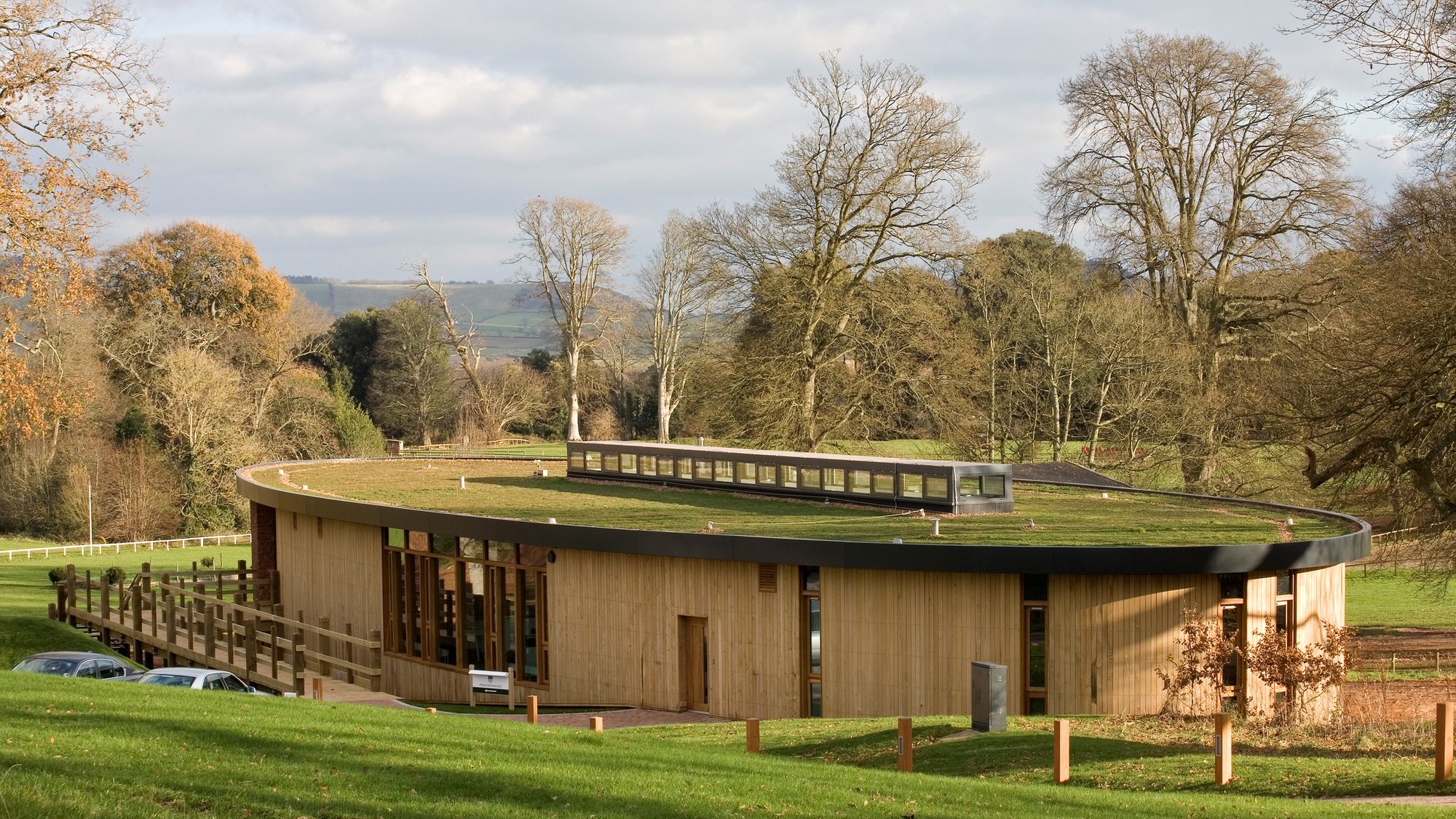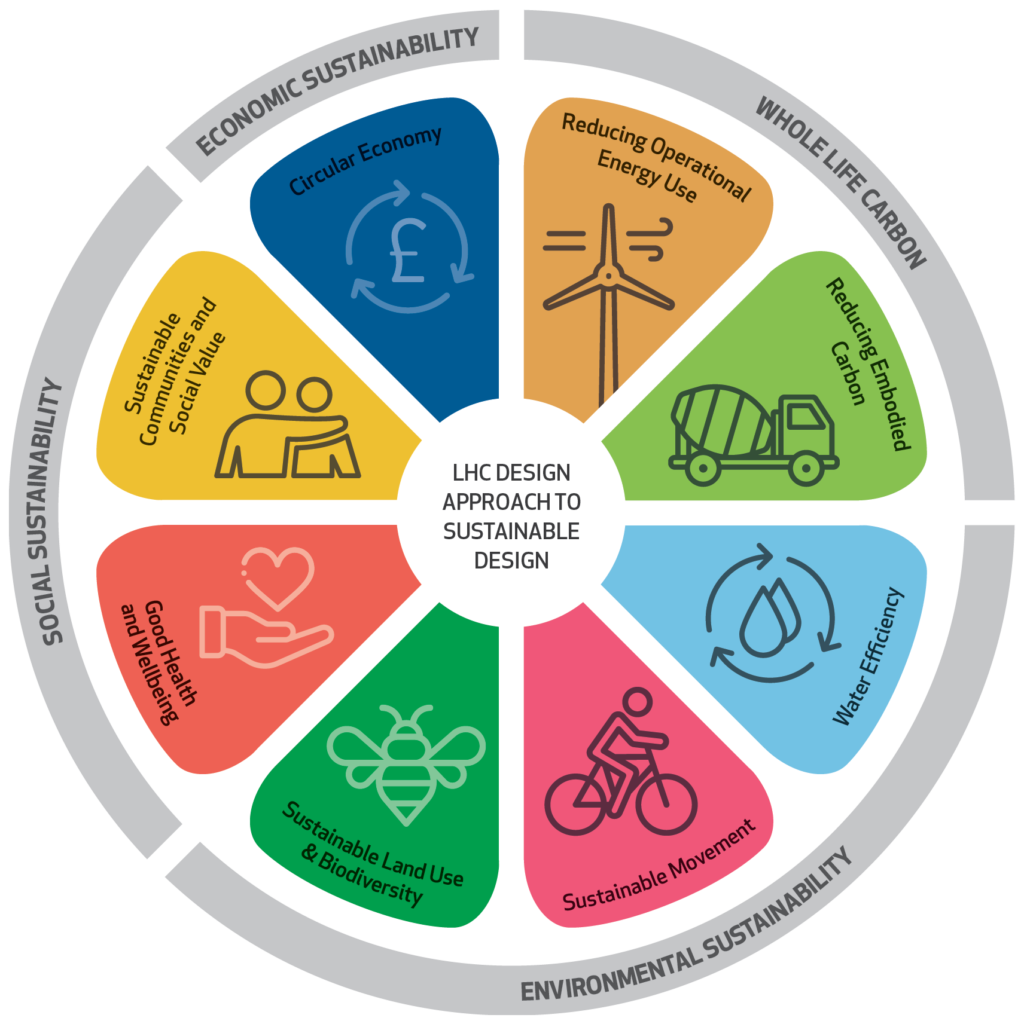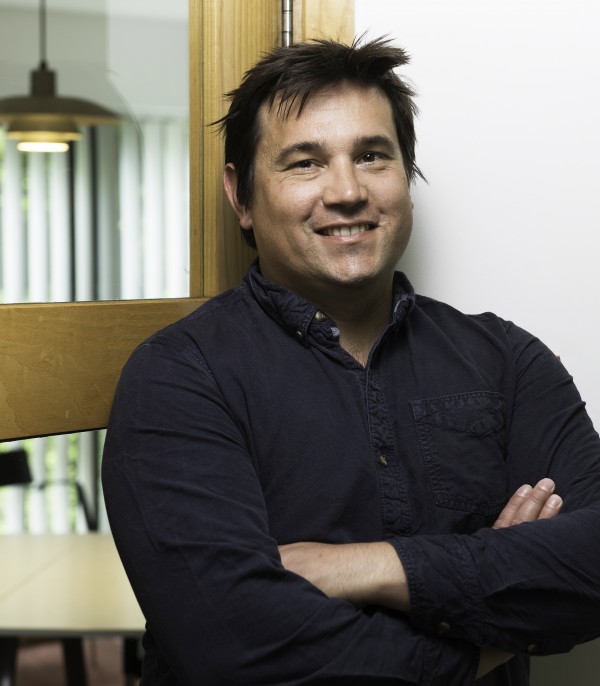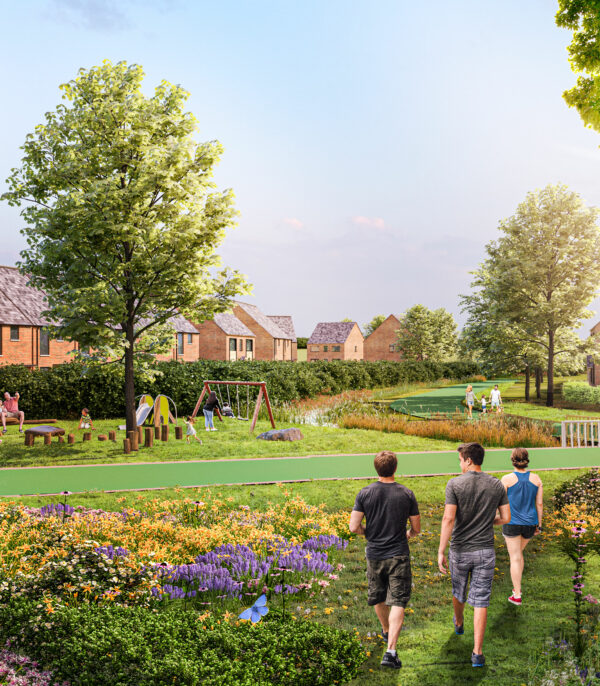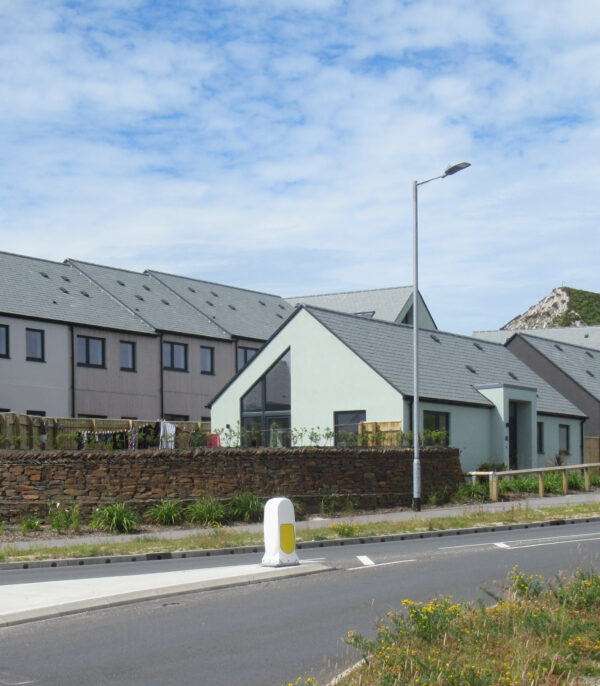Delivering sustainable designs for our green future through a sustainable and holistic approach.
Our Commitment
We are passionate about reducing our impact on the planet.
We recognise that our work within the built and natural environment has an impact and we are committed to ensuring our approach to design and business practices addresses the climate and biodiversity emergency we collectively face.
In 2021 we set up our own Environmental and Sustainability Working Action Group, which draws upon expertise from across our practice to develop our own sustainability road map. We are constantly exploring ways of delivering sustainable design approaches within our projects and constantly reviewing ways of reducing our carbon and environmental footprint.
We support the government’s ambition to achieve the UK’s 2050 net-zero commitment and are proud signatories of both the UK Architects & Landscape Architects Declare movements and to the RIBA’s 2030 Climate Challenge. At a local level, we are also signatories of Plymouth Resurgam Devon Climate Emergency and Exeter City Future Zero Plan.
Working with you to Design a Sustainable Future
We believe that sustainable design principles should be placed at the heart of all development proposals. Our holistic approach to design comprises of 4 key themes (shown in the diagram below), which we apply to all of our projects to reach sustainable outcomes together with our clients and partners.
Many of our goals have been inspired by the RIBA 2030 Climate Challenge, an industry wide set of targets that will help us navigate to net zero targets within the built environment.
Sustainable Design Tailored to meet your aspirations
We offer a wide range of sustainable design services to our clients which can be adapted to suit the needs and sustainability outcomes of a project, including:
- Sustainability Briefing
- Passivhaus Design Services
- Low Operational and Embodied Carbon Designs
- Applying LETI, RIBA 2030 and other Climate Challenge metrics
- Embodied Carbon Analysis
- Assist with BREEAM Assessments
- Post Occupancy Evaluation (POE)
- Assist with Biodiversity Net Gain Assessments
- Building with Nature Assessments
What is Passivhaus?
Passivhaus is a leading international design standard, slashing energy use from buildings and delivering high standards of comfort and health. Passivhaus design principles are increasingly being adopted by architects to deliver low energy buildings. You can find more information about Passivhaus here.
What is the RIBA 2030 Climate Challenge?
The RIBA 2030 Climate Challenge sets a series of voluntary targets for practices to adopt to reduce operational energy, embodied carbon and potable water. It’s purpose is to encourage Practices to take action now and to collaboratively shift in the profession towards sustainable outcome orientated design approaches.
You can find more information about the RIBA and the RIBA 2030 Climate Challenge here.
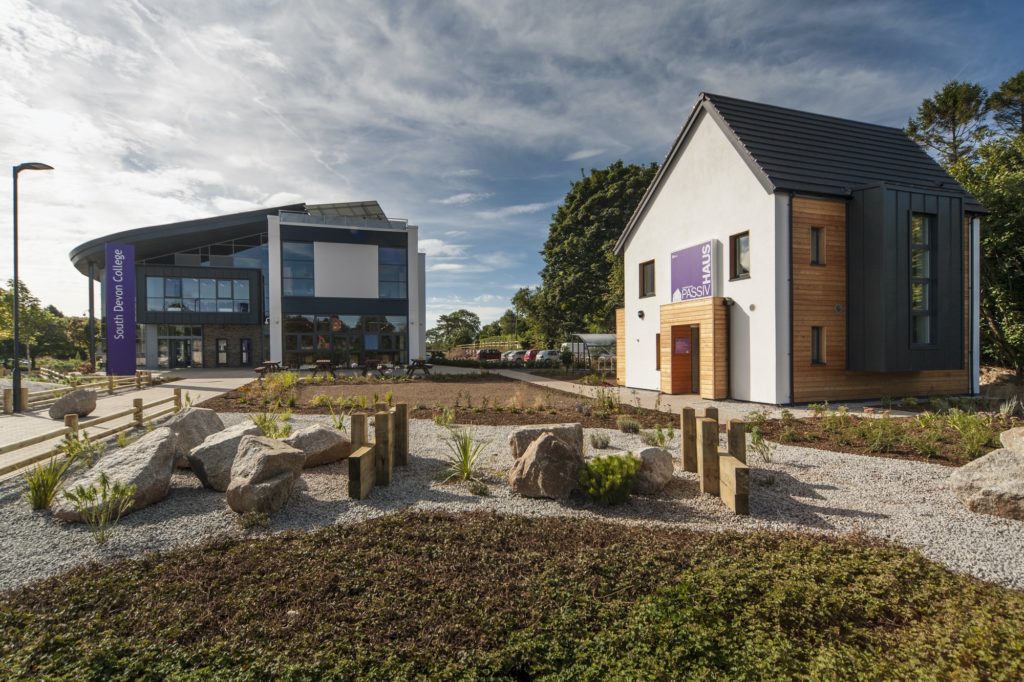
What is a Net Zero Building?
Zero Carbon Building Construction
When the amount of carbon emissions associated with a building’s production and construction stages (embodied carbon) up to practical completion is zero or negative, through the use of offsets or the net export of on-site renewable energy.
Zero Carbon Building Operation
When the amount of carbon emissions associated with the building’s operational energy on an annual basis is zero or negative. A net-zero carbon building is highly energy-efficient and powered from onsite and/or off-site renewable energy sources, with any remaining carbon balance offset.
Net Zero (Whole Life) Carbon
Where the total of all building related emissions, both operational and embodied, over a buildings life cycle are minimized, meet local carbon, energy and water targets, and with residual ‘offsets’ equals zero.
What is LETI?
LETI is a network of over 1000 built environment professionals that are working together to put the UK on the path to a zero carbon future. Since LETI was established in 2017 it has subsequently published a number of key Guidance documents that are helping to inform clients and professionals deliver more sustainable projects on the path to achieving net zero targets.
You can find more information about LETI and find their publications here.
What LHC is doing to reduce our impact on the planet.
As part of our pledge to address the climate and biodiversity emergency, we have developed our own Clean Growth Strategy, which sets ambitious policies and targets that will help us to reduce our environmental footprint and operate in a more sustainable way.
We have also started to calculate our environmental footprint by measuring carbon emissions from our business activities on an annual basis, which will be measured against a 2019 baseline. We aim to use this data to establish strategies of minimizing future GHG emissions and pledge to offset our residual carbon footprint to target carbon neutral operations from 2023 and help us to transition towards Net Zero operations by 2050.
We take a reduction first approach to our carbon footprint. However, in recognition of the impact of our operations, we are investing in UK woodland creation projects that will capture CO2 over the next years. growing trees will also provide wider co-benefits beyond climate mitigation, including flood alleviation water quality improvements, habitat creation, employment, sustainable timber and cleaner air.
To find out more our carbon reduction plan, please download our Clean Growth Strategy and Environmental Footprint Report.
Please get in touch with one of our sustainability champions to talk through your project needs.
Featured Projects
Here’s a look at some of our helping us achieve our projects that integrate sustainable design principles, commitment to a more sustainable built environment.

